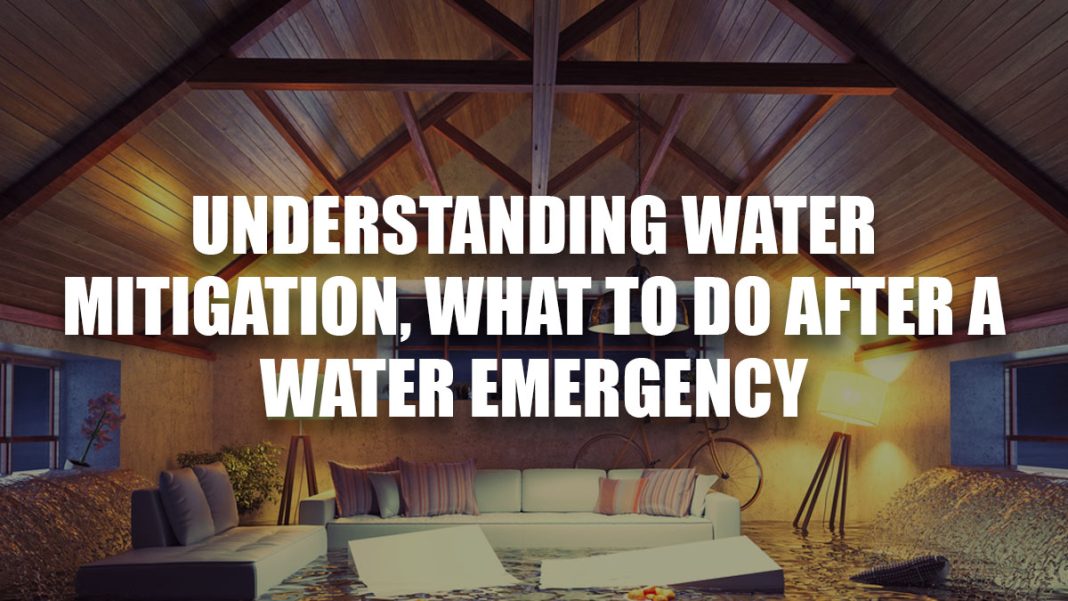Water damage can be devastating to a home or business. Water intrusion can cause extensive damage and lead to mold growth if not addressed promptly, whether it’s a burst pipe, flooding, or a leaky roof. This article will explore the steps after a water emergency, the water cleanup and restoration process, and how to prevent mold and moisture damage. We’ll also discuss the pros and cons of DIY water mitigation versus hiring professionals tvboxbee.
Understanding Water Mitigation
Water mitigation refers to preventing or reducing damage caused by water intrusion or flooding. It involves identifying and stopping the water source, removing moisture and humidity from the affected area, and restoring the property to its pre-damaged condition. The primary objective of water mitigation is to prevent additional harm and ensure the safety of the individuals occupying the affected area stylesrant.
What to do after a water emergency
If you experience a water emergency, acting fast to prevent further damage is crucial. Here are the steps to take:
- If the water comes from a burst pipe or an appliance, turn off the water supply to prevent more water from entering the area.
- If the water has reached any electrical outlets or appliances, turn off the electricity to the site to prevent electrical shock.
- Remove any salvageable items from the affected area to a dry location.
- Use a damp/dry vacuum to remove standing water from the affected area.
- Speed up the drying process of the impacted space by utilizing fans and dehumidifiers.
- Clean the affected area with a disinfectant to prevent the growth of mold celebrities age.
Water Cleanup and Restoration Process
Once you have mitigated the water damage, cleaning up and restoring the affected area is next. Here are the steps to follow:
- Use a moisture meter to check for any remaining water or damage in the affected area.
- Remove any materials that are too damaged to salvage, such as drywall or carpet.
- Use a disinfectant to clean and disinfect the affected area.
- Replace any damaged materials with new ones.
- Use a moisture meter to provide the affected area is arid before restoring any materials or belongings.
Dealing with Mold and Moisture
Mold and moisture can be a significant concern after a water emergency. Here’s how to prevent mold growth:
- Mold can begin to grow within 24-48 hours, so it’s crucial to dry the affected area as soon as possible.
- Use a dehumidifier to keep humidity below 60% to prevent mold growth.
- Increase air circulation in the affected area by using fans to speed up the drying process.
- Use a disinfectant to clean and disinfect the affected area to prevent mold growth.
- If you notice mold growth in the affected area, hiring a professional mold remediation company is best to ensure proper remediation and prevent further damage.
DIY Water Mitigation vs. Hiring Professionals
While handling water damage on your own may be tempting, it’s essential to consider the pros and cons of DIY water mitigation versus hiring professionals. Here are some things to consider:
DIY Water Mitigation
Pros:
- One advantage of DIY water mitigation is that it can save money on labor costs since you’re doing the work yourself instead of hiring professionals.
- Starting DIY water mitigation leads to a faster response time since there’s no need to wait for professionals to arrive.
- Another advantage of DIY water mitigation is that you can have more control over the process since you’re handling the situation.
Cons:
- One downside of DIY water mitigation is that you may need the appropriate equipment to handle the water damage properly. It can lead to further damage or mold growth.
- With proper knowledge and training, it can be easier to identify hidden water damage or mold growth, which can cause long-term issues voxbliss.
- DIY water mitigation can take longer than hiring professionals, especially if you need more experience and knowledge.
Hiring Professionals
Pros:
- Have the proper equipment and expertise to mitigate the water damage properly. Professionals have the equipment and expertise to handle water damage properly, ensuring the best possible outcome.
- Trained professionals can identify hidden water damage or mold growth, which can help prevent further damage and potential health risks.
- Hiring professionals can ensure prompt and efficient completion of the water mitigation process, minimizing downtime and further damage.
Cons:
- It can be more expensive due to labor costs, although one potential downside of hiring professionals is the cost of labor. However, weighing the potential cost savings from avoiding further damage or mold growth is essential.
- It may take time to schedule professionals to handle the water damage, leading to further deterioration.
Quick Action for Water Damage!
In conclusion, water damage can be a stressful and overwhelming experience, but taking immediate action can make all the difference in the mitigation and restoration process. Whether you choose to tackle water mitigation on your own or hire professionals, it’s essential to prioritize safety and efficiency to ensure that your property is restored to its pre-loss condition as quickly as possible. If you require water cleanup in Mission, KS, or surrounding areas, don’t hesitate to seek professional help or guidance. Remember to document everything for insurance purposes and take the necessary steps to prevent future water damage.

